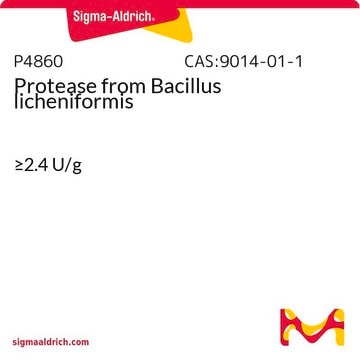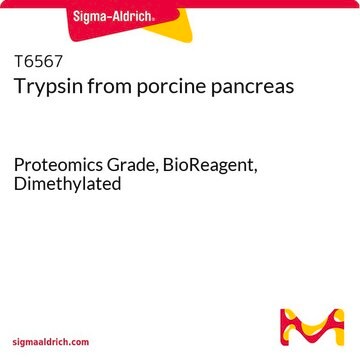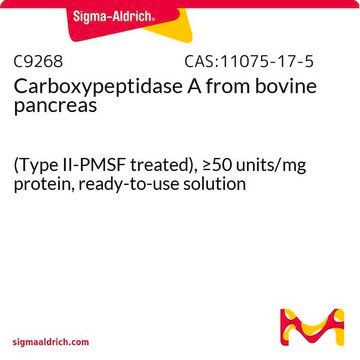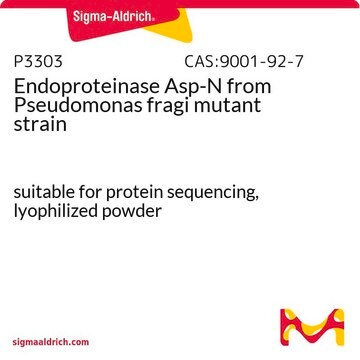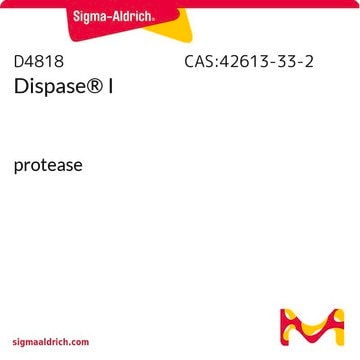The recommended assay buffer includes calcium: 10 mM sodium acetate buffer with 5 mM calcium acetate, pH 7.5 at 37°C. Prepare 100 ml in deionized water using sodium acetate trihydrate and calcium acetate. Adjust the pH to 7.5 at 37°C with 0.1 M acetic acid or 0.1 M NaOH. Additional information can be found at: https://www.sigmaaldrich.com/deepweb/assets/sigmaaldrich/product/documents/390/551/p1512enz.pdf
P1512
Thermolysin from Geobacillus stearothermophilus
Type X, lyophilized powder, 30-350 units/mg protein (E1%/280)
Synonym(s):
Protease from Geobacillus stearothermophilus, Thermophilic-bacterial protease
Select a Size
MXP 2,526.00
Estimated to ship onApril 12, 2025
Select a Size
About This Item
MXP 2,526.00
Estimated to ship onApril 12, 2025
Recommended Products
biological source
Geobacillus stearothermophilus
Quality Level
type
Type X
form
lyophilized powder
specific activity
30-350 units/mg protein (E1%/280)
mol wt
34.6 kDa by amino acid sequence
purified by
crystallization
shipped in
wet ice
storage temp.
−20°C
General description
Application
Quality
Unit Definition
Physical form
Preparation Note
Signal Word
Danger
Hazard Statements
Precautionary Statements
Hazard Classifications
Resp. Sens. 1
Storage Class Code
11 - Combustible Solids
WGK
WGK 3
Flash Point(F)
Not applicable
Flash Point(C)
Not applicable
Personal Protective Equipment
Choose from one of the most recent versions:
Certificates of Analysis (COA)
Don't see the Right Version?
If you require a particular version, you can look up a specific certificate by the Lot or Batch number.
Already Own This Product?
Find documentation for the products that you have recently purchased in the Document Library.
Customers Also Viewed
-
Does the enzyme need to add additional Ca2+ and Zn2+ to be activated?
1 answer-
Helpful?
-
-
Can this product be dissolved in PBS?
Can this product be dissolved in PBS?
1 answer-
There is no specific information available on the dissolution of thermolysin at a 50 mM concentration in PBS. PBS typically contains between 138 to 150 mM sodium chloride, which may or may not lower the overall solubility of the enzyme in PBS. If PBS is used, the user will need to determine if the enzyme fully dissolves in the solution or not.
For the complete enzymatic procedure, you can find the link here: https://www.sigmaaldrich.com/deepweb/assets/sigmaaldrich/product/documents/390/551/p1512enz.pdf
Helpful?
-
Active Filters
Our team of scientists has experience in all areas of research including Life Science, Material Science, Chemical Synthesis, Chromatography, Analytical and many others.
Contact Technical Service



